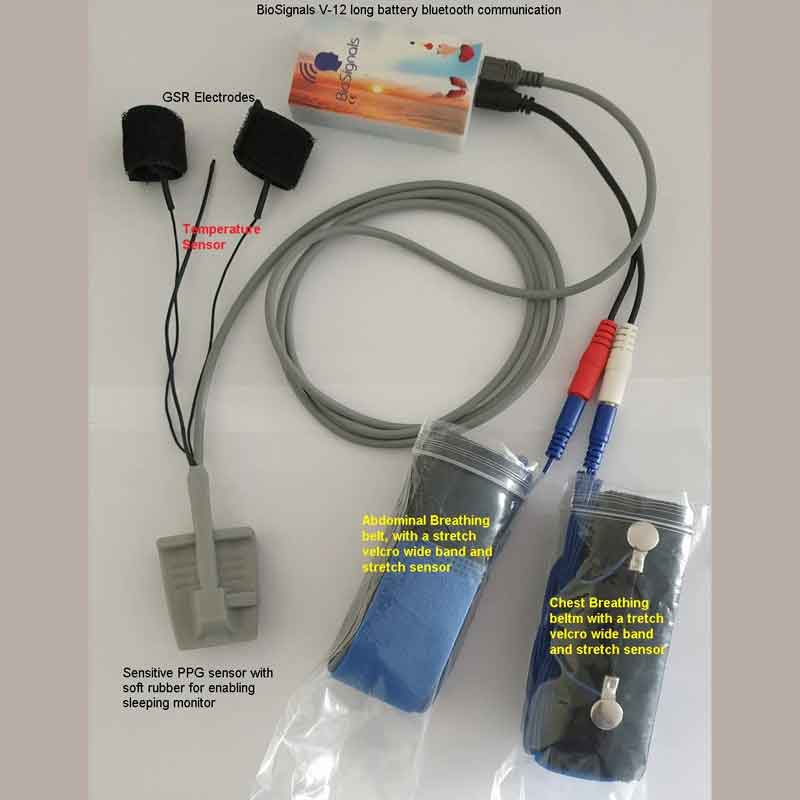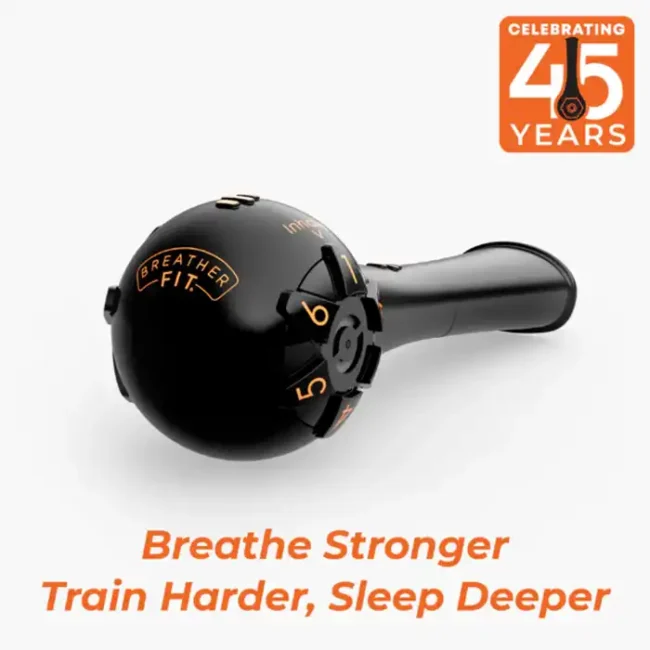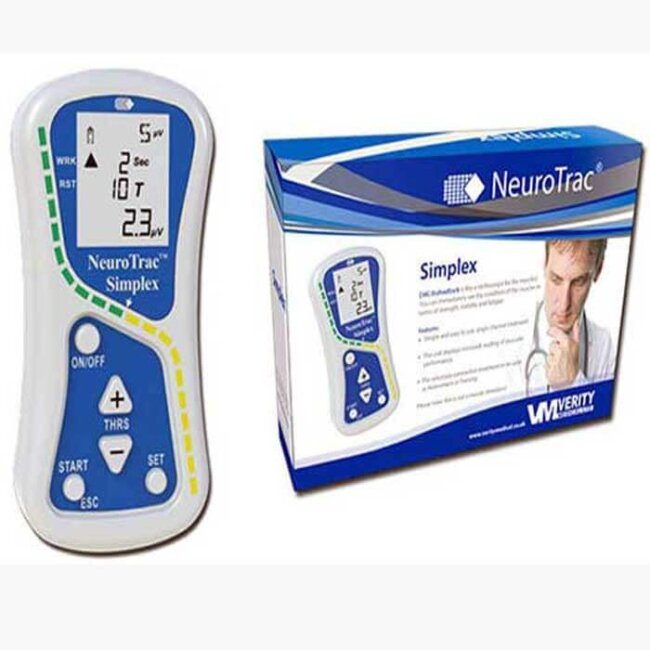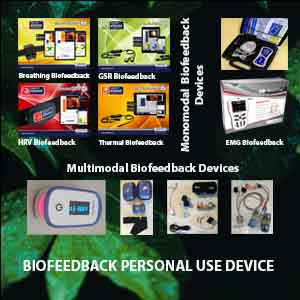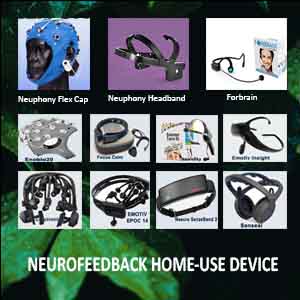Description
Take Control with the BioSignals 5 Biofeedback Sensors Device
Take control of your mental and physical well-being with one of the most advanced biofeedback 5 sensors systems on the market. The BioSignals 5 Biofeedback Sensors Device combines five professional-grade biofeedback sensors into a single, compact solution. It gives you real-time, high-resolution insights into your stress levels, heart rate variability, breathing patterns, skin temperature, and emotional responses. This powerful biofeedback sensor unit is more than a tracker—it’s a personal training tool for your nervous system. With a built-in heart rate variability monitor, galvanic skin response device, skin temperature sensor, breathing sensor, and BVP reader, it delivers clinical-grade measurements from the comfort of your home. Ideal for personal use or therapeutic settings, this multimodal system helps you reduce stress, build focus, and optimize peak performance.
5-in-1 Biofeedback System for Maximum Insight
Designed for users who demand deeper awareness and better health data, this device includes:
- Heart Rate Variability Monitor (HRV) via PPG/BVP for monitoring stress, pressure, and recovery.
- Galvanic Skin Response Device (GSR) to detect emotional arousal and stress levels in real time.
- Skin Temperature Sensor for peripheral body temperature tracking and relaxation training.
- Abdominal Breathing Sensor for breathing exercises and autonomic nervous system balance.
- Multichannel data acquisition unit delivering live signals at 2400 bytes/second.
Each sensor works seamlessly to create a comprehensive picture of your physiological state.
Why Choose the BioSignals Biofeedback 5 Sensor Device?
- Holistic Monitoring: Combines five core biofeedback sensors in one platform.
- Real-Time Feedback: Track every heartbeat, breath, and response live via PC or Android.
- Cloud Integration: Save your history and export training data across devices.
- Precision-Engineered: The heart rate variability monitor, skin temperature sensor, and galvanic skin response device offer high-resolution metrics.
- Effortless Setup: Just plug in via Bluetooth or OTG USB, and start tracking in minutes.
- Comfort First: Each biofeedback sensor is lightweight and non-invasive for all-day usability.

Who Is It For?
- Individuals seeking biofeedback sensor-based stress relief and focus training
- Parents helping students improve concentration and self-regulation
- Coaches, psychologists, and therapists using biofeedback sensor in practice
- Professionals tracking wellness with a heart rate variability monitor, galvanic skin response device, and skin temperature sensor
- Anyone looking to master mind-body awareness using science-based tools
What’s Inside the Box?
- 1x BioSignals Data Acquisition Unit with 5 inputs
- 1x PPG-BVP Heart Rate Variability Monitor
- 1x GSR Cable (Galvanic Skin Response Device)
- 1x High-precision Skin Temperature Sensor
- 1x Abdominal Breathing Sensor Belt
- 1x OTG USB Cable
- 1x PC Software for advanced biofeedback sensor control
- 1x Android App for mobile access and cloud sync
- 1x Raw Signal and Data Analysis Software
Advanced Software for Biofeedback Sensor Training
The included PC software and mobile app let you see all your sensors working together in real time. You can:
- Visualize and analyze stress, HRV, and breathing patterns
- Train with guided exercises using your heart rate variability monitor and breathing sensor
- Track emotional reactivity through the galvanic skin response device
- Use the skin temperature sensor to develop deeper relaxation control
- Export and share results from each sensor for long-term tracking
Real Change Starts with Real Feedback
Whether you’re managing chronic stress, sharpening your mental performance, or using biofeedback 5 sensors in therapy, the BioSignals Biofeedback 5 Sensors Device delivers the insights and tools you need. With its integrated heart rate variability monitor, galvanic skin response device, and skin temperature sensor, you’re fully equipped to take charge of your nervous system health.
Don’t just measure—master your mental and emotional performance.
🔗 Order now and begin your biofeedback sensor journey today.
FAQs: BioSignals Biofeedback 5 Sensors Device
The device measures five physiological signals: Heart Rate (PPG/BVP), Galvanic Skin Response (GSR), Skin Temperature, and Abdominal Breathing. It offers multimodal tracking to give a holistic view of your stress, relaxation, and focus levels.
This device is ideal for individuals managing stress or anxiety, students improving focus, professionals optimizing performance, and therapists or coaches offering neuro-biofeedback training.
Yes, it is suitable for both home users and professionals. With the right software and guidance, anyone interested in self-regulation and wellness can use the device effectively.
The device connects to a Windows PC or an Android mobile via the included embedded firmware. Compatible biofeedback software (often provided or recommended with the device) is needed to visualize and interpret the biosignals.
Absolutely. The device transmits biosignal data in real-time at 2,400 bytes per second, making it ideal for real-time biofeedback training and monitoring.
The device can be used in stress management programs, mindfulness and breathing training, heart rate variability (HRV) training, emotional regulation, focus enhancement exercises, and optimal performance training.
The BioSignals device is compact and designed for portability. It is USB-powered, making it easy to connect to computers or Android devices on the go.

